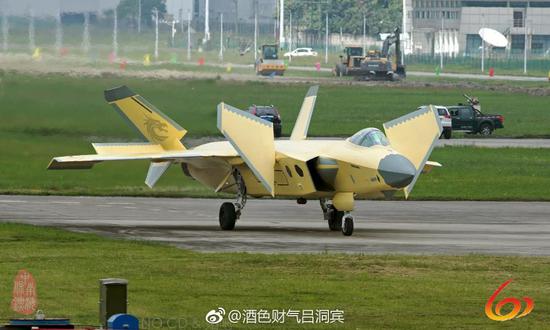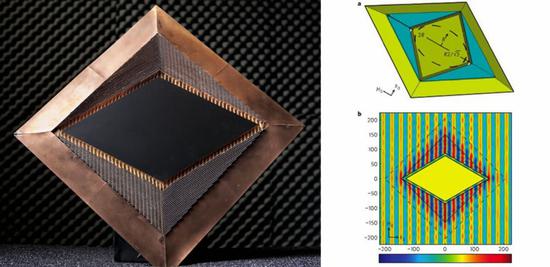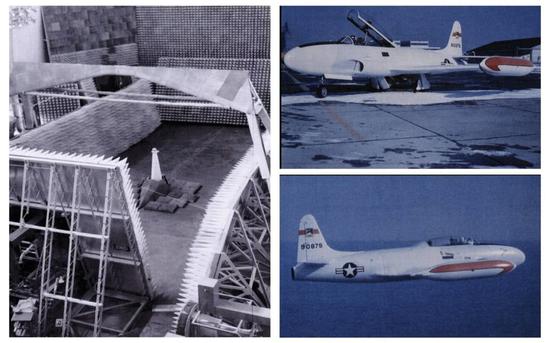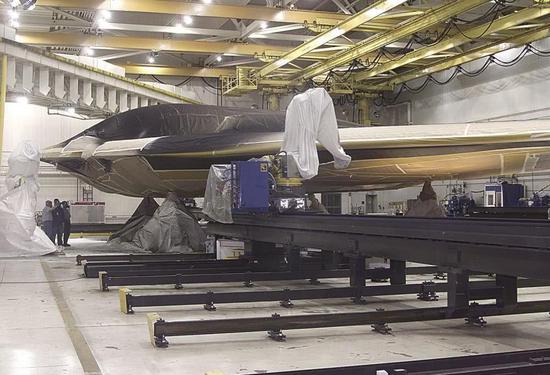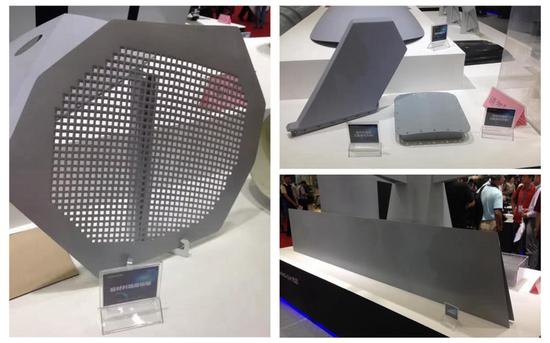- Joined
- Aug 28, 2011
- Messages
- 3,990
- Points
- 63
Nothing will be better than 1st kill of USAF F-22 to up S-400 prices and yet get a loooong queue of desperate customer with $$$CASH$$$ to pay deposit, and willing to wait looong time for delivery! Absolutely MAGA & Huat!
https://mil.news.sina.com.cn/2019-06-30/doc-ihytcerm0274982.shtml
美伊局势紧张之际 美空军首次向其周边部署F22战机
2019年06月30日 07:37 海外网
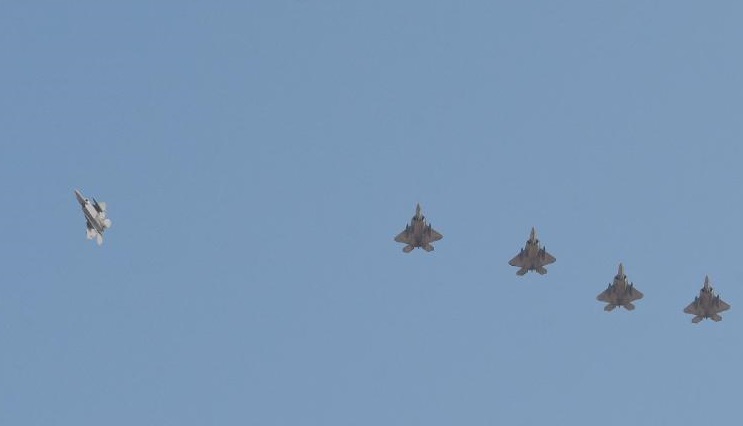
美空军多架F22隐形战机被派往卡塔尔乌代德空军基地。(图源:CNN)
海外网6月30日电 美伊局势近期持续紧张。美媒29日报道称,近日,美国空军首次向中东国家卡塔尔派遣至少5架F22隐形战斗机。
据美国有线电视新闻网(CNN)报道,美国空军中央司令部日前发表一份声明和照片称,派遣的F22战机已于周四(27日)抵达卡塔尔的乌代德空军基地(Al Udeid Air Base)。虽然声明中没有提到派遣的战机总数,但从照片中可以看到基地至少停放5架战机。
声明中称“首次将F22战机部署在卡塔尔,是为了保卫美国军队和美国中央指挥部负责区域的利益。”此举也是在伊朗地对空导弹在霍尔木兹海峡击落一架美国无人机一周之后,美方做出的最新动作。事发之后,伊朗称无人机是在其领空飞行,并曝光无人机残骸照片,而美国则坚称飞机是在国际水域飞行。
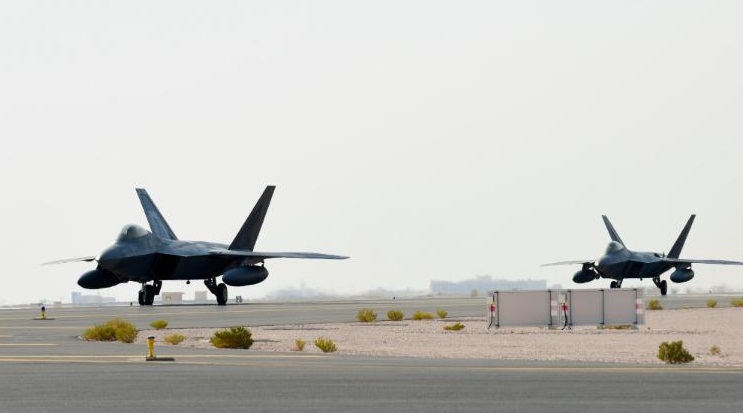
位于乌代德空军基地的F22隐形战机。(图源:CNN)
现供职于格里菲斯亚洲研究所(the Griffith Asia Institute)的前澳大利亚空军军官莱顿(Peter Layton)表示,如果美国与伊朗发生全面敌对行动,F22战机的主要任务或将是瞄准伊朗的地对空导弹系统,尤其是其目前最佳防空系统S-300。莱顿说:“S-300将会成为第一波攻击的首要目标,为之后的攻击打开空间。”
6月中东地区先后发生日本油轮阿曼湾遇袭和伊朗在霍尔木兹海峡击落美无人机事件,两国关系骤然紧张。在日本油轮遇袭一事上,美方一味指责伊朗是幕后黑手,伊朗方面则做出坚决表态称美方的指责毫无根据。
2018年5月,美国单方面退出《伊核协议》,并逐级恢复对伊朗的各方面制裁,导致美伊关系此后走上下坡路。5月美国将航母战斗群派往阿拉伯海,加剧局势紧张。针对美国的动作,伊朗方面表示已做好最高级别的防御准备,以应对任何类型的威胁。(海外网 魏雪巍)
https://mil.news.sina.com.cn/2019-06-30/doc-ihytcerm0328214.shtml
美国部署F22对伊施压 参议院否决约束总统动武提案
2019年06月30日 13:04 参考消息
40
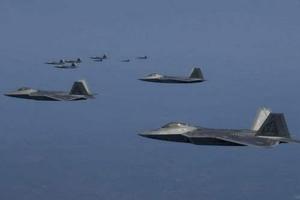
参考消息网6月30日报道 外媒称,美国已向海湾国家卡塔尔部署约12架空军F-22隐形战斗机,这是美中央司令部上月为应对所谓伊朗对驻该地区美军日益严重的威胁,要求实施增兵计划的一部分。
据美联社6月28日报道,美国空军中央司令部28日说,这些F-22战机本周抵达乌代德空军基地,“保护美国的军队和利益”。
空军中央司令部在其网站上刊登了数架F-22战机27日抵达时的照片,并说这是F-22战机首次在乌代德基地部署,该基地是美国在中东的空中行动中心。
报道称,携带空对空导弹并能执行地面攻击任务的F-22战机此前曾部署在阿联酋的宰夫拉空军基地,并于2018年参加支援在叙利亚作战的美军及盟军部队的任务。
白宫5月5日宣布,向该地区紧急派遣“亚伯拉罕·林肯”号航母战斗群,以回应“令人不安和不断升级的迹象和警告”,并“向伊朗政权发出信息,如果美国及其盟友的利益受到任何攻击,美国将以无情的武力予以回应”。在作出航母部署后不久,美国又向乌代德空军基地部署4架B-52战略轰炸机。
应中央司令部负责人弗兰克·麦肯齐的要求,美国最近几周还在海湾地区增加部署“爱国者”导弹防御系统。他还要求增派侦察和情报收集飞机,提高军方监控伊朗对海湾航运威胁的能力。
另据路透社6月28日报道,美国参议院28日否决了一项旨在禁止总统唐纳德·特朗普在未经国会授权的情况下对伊朗动武(自卫除外)的立法。
这项年度国防政策法案修正案提案在参议院的表决结果为50∶40,未达到在民主党把持的参议院过关所需的60票。10名参议员未投票。
在过去两个月里,美伊军事关系日趋紧张。
报道称,美国参议院27日通过2020财政年度国防授权法案,但在一些共和党和民主党议员呼吁先就此事进行讨论之后,参议院领导人罕见地决定,28日才对修正案进行表决。
他们还同意,投票将从美国东部时间凌晨5点一直持续到下午,以便于在迈阿密参加总统竞选活动的民主党人返回投票。投票于10小时后,即下午3时结束。
该提案的共和党反对者认为,如果特朗普面临来自伊朗的威胁,该法案会使他受到不必要的限制。
支持者则认为,有必要确保国会保留授权动武的宪法权利,并降低国家因误判陷入长期冲突的可能性。
一周前,特朗普在最后时刻取消对伊朗的空袭行动。
又据路透社6月28日报道,伊朗代表说,欧洲国家在28日举行的旨在作最后努力的会谈中,提供的(好处)太少,不足以说服该国放弃突破伊核协议限制的计划。
在华盛顿紧急叫停对伊朗空袭一周后,外交人士说,德黑兰还有数日即将突破2015年伊核协议规定的浓缩铀存量上限。华盛顿于2018年宣布退出该协议。
协议的其他各方,包括英国、德国、法国、俄罗斯和中国,28日在维也纳与伊朗官员举行紧急会议,希望说服德黑兰勿打破协议。
https://mil.news.sina.com.cn/world/2019-06-30/doc-ihytcerm0319775.shtml
美军F22首次飞抵卡塔尔 伊朗称已做好应对夜袭准备
2019年06月30日 12:09 海外网
14
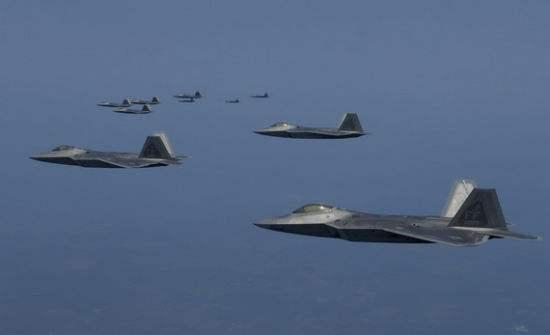
28日,多架美军F-22隐形战机飞抵美军设在卡塔尔的乌代德空军基地。美军称,这是为了应对所谓来自伊朗的“威胁”。这也是美军F-22战机首次部署在乌代德空军基地。
对此,伊朗陆军司令阿卜杜勒-拉西姆·穆萨维29日表示,伊朗有强大的军力,任何对伊朗的攻击都不可能发生。他说,“我们对敌人严密监视,甚至对夜袭都做好了应对准备”,目前的情报并没有显示出有“战争迹象”。
Https://mil.news.sina.com.cn/2019-06-30/doc-ihytcerm0274982.shtml
The US Air Force deployed the F22 fighter to its surroundings for the first time.
June 30, 2019 07:37 Overseas Network
The US Air Force's multiple F22 stealth fighters were dispatched to the Udad Air Force Base in Qatar. (Source: CNN)
Overseas network on June 30th The situation in the United States and Iraq has continued to be tight recently. US media reported on the 29th that recently, the US Air Force dispatched at least five F22 stealth fighters to the Middle East Qatar for the first time.
According to CNN, the US Air Force Central Command issued a statement and photos that the dispatched F22 aircraft arrived at the Udid Air Base in Qatar on Thursday (27th). ). Although the statement did not mention the total number of fighters dispatched, it can be seen from the photo that the base has at least 5 fighters.
The statement stated that "the first deployment of the F22 in Qatar is to defend the interests of the US military and the US Central Command." The move is also to shoot down an American drone in the Strait of Hormuz in Iranian surface-to-air missiles. A week later, the latest action made by the US. After the incident, Iran claimed that the drone was flying in its airspace and exposed the photo of the drone wreck, while the United States insisted that the plane was flying in international waters.
F22 stealth fighter at Udayd Air Force Base. (Source: CNN)
Peter Layton, a former Australian Air Force officer who works for the Griffith Asia Institute, said that if the United States and Iran are fully hostile, the main task of the F22 will be to target Iran. Air-to-air missile system, especially its current best air defense system S-300. Leiden said: "The S-300 will be the primary target of the first wave of attacks, opening up space for subsequent attacks."
In June, the Middle East suffered a Japanese tanker attack on the Gulf of Oman and Iran’s shooting down of the US drone in the Strait of Hormuz. The relationship between the two countries was suddenly tense. On the occasion of the Japanese oil tanker attack, the US side accused Iran of being behind the scenes. The Iranian side made a firm statement that the US accusation was unfounded.
In May 2018, the United States unilaterally withdrew from the "Iranian Nuclear Agreement" and gradually resumed sanctions against Iran in various aspects, resulting in the US-Iran relations going downhill. In May, the United States sent the carrier battle group to the Arabian Sea, which aggravated the situation. In response to the actions of the United States, the Iranian side stated that it has prepared for the highest level of defense to deal with any type of threat. (Overseas website Wei Xueyu)
Https://mil.news.sina.com.cn/2019-06-30/doc-ihytcerm0328214.shtml
The United States deploys F22 to pressure Iraq. The Senate vetoes the proposal to restrain the president from using force.
June 30, 2019 13:04 Reference message
40
The reference media reported on June 30 that foreign media said that the United States has deployed about 12 Air Force F-22 stealth fighters to the Gulf of Qatar. This is the US Central Command’s response to the so-called Iran’s growing threat to the US forces in the region last month. Part of the plan to implement the surge.
According to the Associated Press reported on June 28, the US Air Force Central Command said on the 28th that these F-22 fighters arrived at Udayd Air Force Base this week to "protect the US military and interests."
The Air Force Central Command published photos of several F-22 fighters on its website on the 27th, saying that it was the first time the F-22 was deployed at the Udayd Base, the US air operations center in the Middle East.
According to reports, the F-22, which carries air-to-air missiles and can perform ground attack missions, was previously deployed at the Zafra Air Force Base in the United Arab Emirates and in 2018 participated in the mission of supporting US and Allied forces operating in Syria.
The White House announced on May 5 that it would urgently dispatch the "Abraham Lincoln" aircraft carrier battle group to the region in response to "signs and warnings of disturbing and escalating" and "send information to the Iranian regime if the United States and its allies The interests of the United States will be attacked with any ruthless force." Shortly after the deployment of the aircraft carrier, the United States deployed four B-52 strategic bombers to the Udaid Air Force Base.
At the request of Frank McKenzie, head of the Central Command, the United States has increased the deployment of the Patriot missile defense system in the Gulf in recent weeks. He also called for additional reconnaissance and intelligence gathering aircraft to improve the military's ability to monitor Iran's threat to Gulf shipping.
According to a Reuters report on June 28, the US Senate on the 28th vetoed a law aimed at banning President Donald Trump from using force against Iran (except for self-defense) without the authorization of Congress.
The proposed amendment to the National Defense Policy Act in the Senate was 50:40 in the Senate and did not reach the 60 votes required for the Senate to pass the Senate. Ten senators did not vote.
In the past two months, military relations between the United States and Iraq have become increasingly tense.
The report said that the US Senate passed the 2020 fiscal year national defense authorization bill, but after some Republican and Democratic lawmakers called for discussion on the matter, the Senate leaders rarely decided to vote on the amendment on the 28th.
They also agreed that the vote will continue from 5 am EST to the afternoon, so that Democrats who participated in the presidential campaign in Miami will return to vote. The vote ends after 10 hours, which is 3 pm.
The Republican opponent of the proposal believes that if Trump faces a threat from Iran, the bill would impose unnecessary restrictions on him.
Proponents argue that it is necessary to ensure that Congress retains the constitutional right to authorize the use of force and reduces the likelihood that the country will fall into a long-term conflict due to misjudgment.
A week ago, Trump canceled the air strike against Iran at the last moment.
According to Reuters reported on June 28, the Iranian representative said that the European countries provided too little (benefit) in the talks aimed at making final efforts on the 28th, which was not enough to persuade the country to abandon the breakthrough of the Iranian nuclear agreement. plan.
A week after Washington’s emergency call to Iran’s air strikes, diplomats said Tehran would have to break through the uranium enrichment limit set by the 2015 Iranian nuclear agreement in a few days. Washington announced its withdrawal from the agreement in 2018.
The other parties to the agreement, including the United Kingdom, Germany, France, Russia and China, held an emergency meeting with Iranian officials in Vienna on the 28th, hoping to persuade Tehran not to break the agreement.
Https://mil.news.sina.com.cn/world/2019-06-30/doc-ihytcerm0319775.shtml
US F22 flies to Qatar for the first time. Iran says it is ready to deal with the night attack.
June 30, 2019 12:09 Overseas Network
14
On the 28th, a number of US F-22 stealth fighters flew to the Ueda Air Force Base in Qatar. The US military said that this is in response to the so-called "threat" from Iran. This is also the first time the US F-22 has been deployed at the Udaid Air Force Base.
In response, Iranian Army Commander Abdul Rasim Mousavi said on the 29th that Iran has a strong military power and that any attack on Iran will not happen. He said, "We are closely monitoring the enemy and even preparing for the night attack." The current information does not show "war signs."
https://mil.news.sina.com.cn/2019-06-30/doc-ihytcerm0274982.shtml
美伊局势紧张之际 美空军首次向其周边部署F22战机
2019年06月30日 07:37 海外网

美空军多架F22隐形战机被派往卡塔尔乌代德空军基地。(图源:CNN)
海外网6月30日电 美伊局势近期持续紧张。美媒29日报道称,近日,美国空军首次向中东国家卡塔尔派遣至少5架F22隐形战斗机。
据美国有线电视新闻网(CNN)报道,美国空军中央司令部日前发表一份声明和照片称,派遣的F22战机已于周四(27日)抵达卡塔尔的乌代德空军基地(Al Udeid Air Base)。虽然声明中没有提到派遣的战机总数,但从照片中可以看到基地至少停放5架战机。
声明中称“首次将F22战机部署在卡塔尔,是为了保卫美国军队和美国中央指挥部负责区域的利益。”此举也是在伊朗地对空导弹在霍尔木兹海峡击落一架美国无人机一周之后,美方做出的最新动作。事发之后,伊朗称无人机是在其领空飞行,并曝光无人机残骸照片,而美国则坚称飞机是在国际水域飞行。

位于乌代德空军基地的F22隐形战机。(图源:CNN)
现供职于格里菲斯亚洲研究所(the Griffith Asia Institute)的前澳大利亚空军军官莱顿(Peter Layton)表示,如果美国与伊朗发生全面敌对行动,F22战机的主要任务或将是瞄准伊朗的地对空导弹系统,尤其是其目前最佳防空系统S-300。莱顿说:“S-300将会成为第一波攻击的首要目标,为之后的攻击打开空间。”
6月中东地区先后发生日本油轮阿曼湾遇袭和伊朗在霍尔木兹海峡击落美无人机事件,两国关系骤然紧张。在日本油轮遇袭一事上,美方一味指责伊朗是幕后黑手,伊朗方面则做出坚决表态称美方的指责毫无根据。
2018年5月,美国单方面退出《伊核协议》,并逐级恢复对伊朗的各方面制裁,导致美伊关系此后走上下坡路。5月美国将航母战斗群派往阿拉伯海,加剧局势紧张。针对美国的动作,伊朗方面表示已做好最高级别的防御准备,以应对任何类型的威胁。(海外网 魏雪巍)
https://mil.news.sina.com.cn/2019-06-30/doc-ihytcerm0328214.shtml
美国部署F22对伊施压 参议院否决约束总统动武提案
2019年06月30日 13:04 参考消息
40

参考消息网6月30日报道 外媒称,美国已向海湾国家卡塔尔部署约12架空军F-22隐形战斗机,这是美中央司令部上月为应对所谓伊朗对驻该地区美军日益严重的威胁,要求实施增兵计划的一部分。
据美联社6月28日报道,美国空军中央司令部28日说,这些F-22战机本周抵达乌代德空军基地,“保护美国的军队和利益”。
空军中央司令部在其网站上刊登了数架F-22战机27日抵达时的照片,并说这是F-22战机首次在乌代德基地部署,该基地是美国在中东的空中行动中心。
报道称,携带空对空导弹并能执行地面攻击任务的F-22战机此前曾部署在阿联酋的宰夫拉空军基地,并于2018年参加支援在叙利亚作战的美军及盟军部队的任务。
白宫5月5日宣布,向该地区紧急派遣“亚伯拉罕·林肯”号航母战斗群,以回应“令人不安和不断升级的迹象和警告”,并“向伊朗政权发出信息,如果美国及其盟友的利益受到任何攻击,美国将以无情的武力予以回应”。在作出航母部署后不久,美国又向乌代德空军基地部署4架B-52战略轰炸机。
应中央司令部负责人弗兰克·麦肯齐的要求,美国最近几周还在海湾地区增加部署“爱国者”导弹防御系统。他还要求增派侦察和情报收集飞机,提高军方监控伊朗对海湾航运威胁的能力。
另据路透社6月28日报道,美国参议院28日否决了一项旨在禁止总统唐纳德·特朗普在未经国会授权的情况下对伊朗动武(自卫除外)的立法。
这项年度国防政策法案修正案提案在参议院的表决结果为50∶40,未达到在民主党把持的参议院过关所需的60票。10名参议员未投票。
在过去两个月里,美伊军事关系日趋紧张。
报道称,美国参议院27日通过2020财政年度国防授权法案,但在一些共和党和民主党议员呼吁先就此事进行讨论之后,参议院领导人罕见地决定,28日才对修正案进行表决。
他们还同意,投票将从美国东部时间凌晨5点一直持续到下午,以便于在迈阿密参加总统竞选活动的民主党人返回投票。投票于10小时后,即下午3时结束。
该提案的共和党反对者认为,如果特朗普面临来自伊朗的威胁,该法案会使他受到不必要的限制。
支持者则认为,有必要确保国会保留授权动武的宪法权利,并降低国家因误判陷入长期冲突的可能性。
一周前,特朗普在最后时刻取消对伊朗的空袭行动。
又据路透社6月28日报道,伊朗代表说,欧洲国家在28日举行的旨在作最后努力的会谈中,提供的(好处)太少,不足以说服该国放弃突破伊核协议限制的计划。
在华盛顿紧急叫停对伊朗空袭一周后,外交人士说,德黑兰还有数日即将突破2015年伊核协议规定的浓缩铀存量上限。华盛顿于2018年宣布退出该协议。
协议的其他各方,包括英国、德国、法国、俄罗斯和中国,28日在维也纳与伊朗官员举行紧急会议,希望说服德黑兰勿打破协议。
https://mil.news.sina.com.cn/world/2019-06-30/doc-ihytcerm0319775.shtml
美军F22首次飞抵卡塔尔 伊朗称已做好应对夜袭准备
2019年06月30日 12:09 海外网
14

28日,多架美军F-22隐形战机飞抵美军设在卡塔尔的乌代德空军基地。美军称,这是为了应对所谓来自伊朗的“威胁”。这也是美军F-22战机首次部署在乌代德空军基地。
对此,伊朗陆军司令阿卜杜勒-拉西姆·穆萨维29日表示,伊朗有强大的军力,任何对伊朗的攻击都不可能发生。他说,“我们对敌人严密监视,甚至对夜袭都做好了应对准备”,目前的情报并没有显示出有“战争迹象”。
Https://mil.news.sina.com.cn/2019-06-30/doc-ihytcerm0274982.shtml
The US Air Force deployed the F22 fighter to its surroundings for the first time.
June 30, 2019 07:37 Overseas Network
The US Air Force's multiple F22 stealth fighters were dispatched to the Udad Air Force Base in Qatar. (Source: CNN)
Overseas network on June 30th The situation in the United States and Iraq has continued to be tight recently. US media reported on the 29th that recently, the US Air Force dispatched at least five F22 stealth fighters to the Middle East Qatar for the first time.
According to CNN, the US Air Force Central Command issued a statement and photos that the dispatched F22 aircraft arrived at the Udid Air Base in Qatar on Thursday (27th). ). Although the statement did not mention the total number of fighters dispatched, it can be seen from the photo that the base has at least 5 fighters.
The statement stated that "the first deployment of the F22 in Qatar is to defend the interests of the US military and the US Central Command." The move is also to shoot down an American drone in the Strait of Hormuz in Iranian surface-to-air missiles. A week later, the latest action made by the US. After the incident, Iran claimed that the drone was flying in its airspace and exposed the photo of the drone wreck, while the United States insisted that the plane was flying in international waters.
F22 stealth fighter at Udayd Air Force Base. (Source: CNN)
Peter Layton, a former Australian Air Force officer who works for the Griffith Asia Institute, said that if the United States and Iran are fully hostile, the main task of the F22 will be to target Iran. Air-to-air missile system, especially its current best air defense system S-300. Leiden said: "The S-300 will be the primary target of the first wave of attacks, opening up space for subsequent attacks."
In June, the Middle East suffered a Japanese tanker attack on the Gulf of Oman and Iran’s shooting down of the US drone in the Strait of Hormuz. The relationship between the two countries was suddenly tense. On the occasion of the Japanese oil tanker attack, the US side accused Iran of being behind the scenes. The Iranian side made a firm statement that the US accusation was unfounded.
In May 2018, the United States unilaterally withdrew from the "Iranian Nuclear Agreement" and gradually resumed sanctions against Iran in various aspects, resulting in the US-Iran relations going downhill. In May, the United States sent the carrier battle group to the Arabian Sea, which aggravated the situation. In response to the actions of the United States, the Iranian side stated that it has prepared for the highest level of defense to deal with any type of threat. (Overseas website Wei Xueyu)
Https://mil.news.sina.com.cn/2019-06-30/doc-ihytcerm0328214.shtml
The United States deploys F22 to pressure Iraq. The Senate vetoes the proposal to restrain the president from using force.
June 30, 2019 13:04 Reference message
40
The reference media reported on June 30 that foreign media said that the United States has deployed about 12 Air Force F-22 stealth fighters to the Gulf of Qatar. This is the US Central Command’s response to the so-called Iran’s growing threat to the US forces in the region last month. Part of the plan to implement the surge.
According to the Associated Press reported on June 28, the US Air Force Central Command said on the 28th that these F-22 fighters arrived at Udayd Air Force Base this week to "protect the US military and interests."
The Air Force Central Command published photos of several F-22 fighters on its website on the 27th, saying that it was the first time the F-22 was deployed at the Udayd Base, the US air operations center in the Middle East.
According to reports, the F-22, which carries air-to-air missiles and can perform ground attack missions, was previously deployed at the Zafra Air Force Base in the United Arab Emirates and in 2018 participated in the mission of supporting US and Allied forces operating in Syria.
The White House announced on May 5 that it would urgently dispatch the "Abraham Lincoln" aircraft carrier battle group to the region in response to "signs and warnings of disturbing and escalating" and "send information to the Iranian regime if the United States and its allies The interests of the United States will be attacked with any ruthless force." Shortly after the deployment of the aircraft carrier, the United States deployed four B-52 strategic bombers to the Udaid Air Force Base.
At the request of Frank McKenzie, head of the Central Command, the United States has increased the deployment of the Patriot missile defense system in the Gulf in recent weeks. He also called for additional reconnaissance and intelligence gathering aircraft to improve the military's ability to monitor Iran's threat to Gulf shipping.
According to a Reuters report on June 28, the US Senate on the 28th vetoed a law aimed at banning President Donald Trump from using force against Iran (except for self-defense) without the authorization of Congress.
The proposed amendment to the National Defense Policy Act in the Senate was 50:40 in the Senate and did not reach the 60 votes required for the Senate to pass the Senate. Ten senators did not vote.
In the past two months, military relations between the United States and Iraq have become increasingly tense.
The report said that the US Senate passed the 2020 fiscal year national defense authorization bill, but after some Republican and Democratic lawmakers called for discussion on the matter, the Senate leaders rarely decided to vote on the amendment on the 28th.
They also agreed that the vote will continue from 5 am EST to the afternoon, so that Democrats who participated in the presidential campaign in Miami will return to vote. The vote ends after 10 hours, which is 3 pm.
The Republican opponent of the proposal believes that if Trump faces a threat from Iran, the bill would impose unnecessary restrictions on him.
Proponents argue that it is necessary to ensure that Congress retains the constitutional right to authorize the use of force and reduces the likelihood that the country will fall into a long-term conflict due to misjudgment.
A week ago, Trump canceled the air strike against Iran at the last moment.
According to Reuters reported on June 28, the Iranian representative said that the European countries provided too little (benefit) in the talks aimed at making final efforts on the 28th, which was not enough to persuade the country to abandon the breakthrough of the Iranian nuclear agreement. plan.
A week after Washington’s emergency call to Iran’s air strikes, diplomats said Tehran would have to break through the uranium enrichment limit set by the 2015 Iranian nuclear agreement in a few days. Washington announced its withdrawal from the agreement in 2018.
The other parties to the agreement, including the United Kingdom, Germany, France, Russia and China, held an emergency meeting with Iranian officials in Vienna on the 28th, hoping to persuade Tehran not to break the agreement.
Https://mil.news.sina.com.cn/world/2019-06-30/doc-ihytcerm0319775.shtml
US F22 flies to Qatar for the first time. Iran says it is ready to deal with the night attack.
June 30, 2019 12:09 Overseas Network
14
On the 28th, a number of US F-22 stealth fighters flew to the Ueda Air Force Base in Qatar. The US military said that this is in response to the so-called "threat" from Iran. This is also the first time the US F-22 has been deployed at the Udaid Air Force Base.
In response, Iranian Army Commander Abdul Rasim Mousavi said on the 29th that Iran has a strong military power and that any attack on Iran will not happen. He said, "We are closely monitoring the enemy and even preparing for the night attack." The current information does not show "war signs."

/arc-anglerfish-arc2-prod-mco.s3.amazonaws.com/public/CGB2PPNAPRAU3PMTYOQKLBJNZM.jpg)
/arc-anglerfish-arc2-prod-mco.s3.amazonaws.com/public/322GJN6RZFEFBB74Y43PS7TPUI.jpg)

